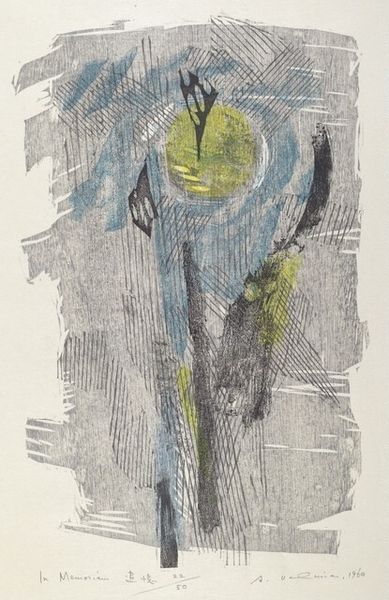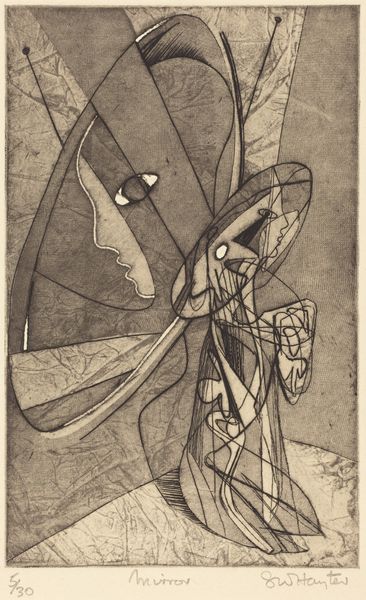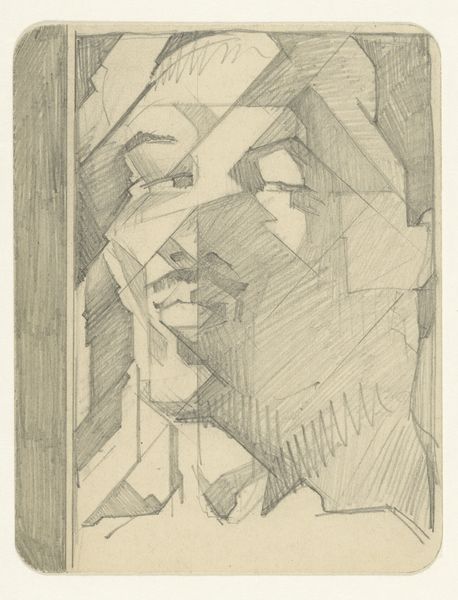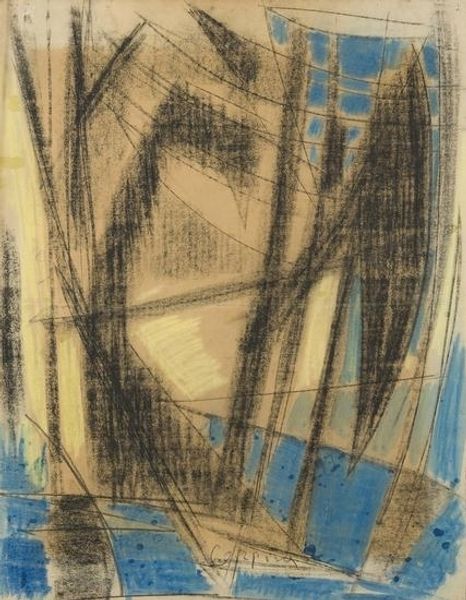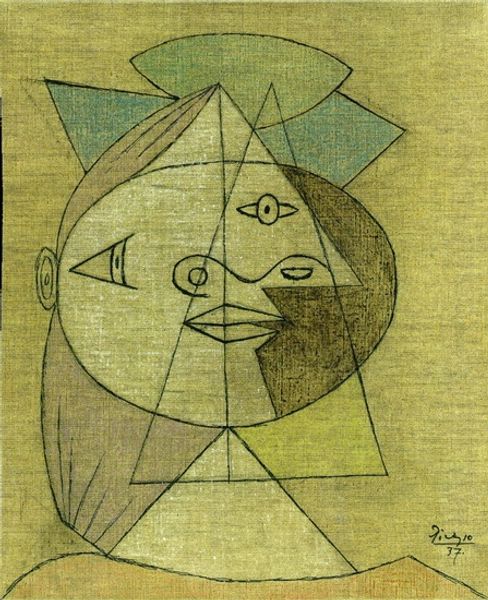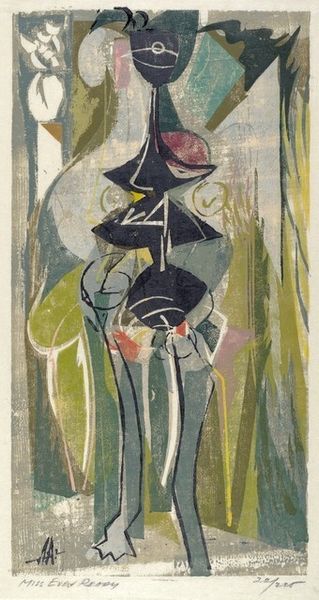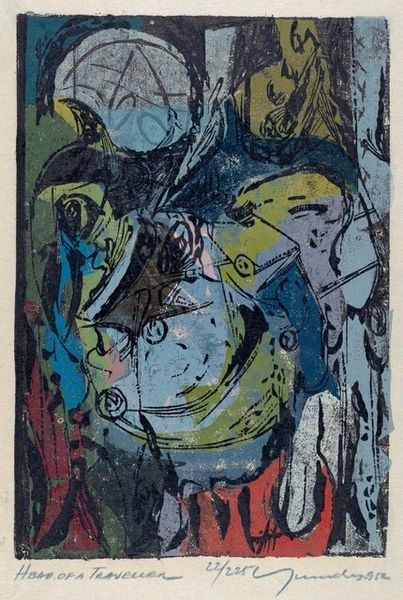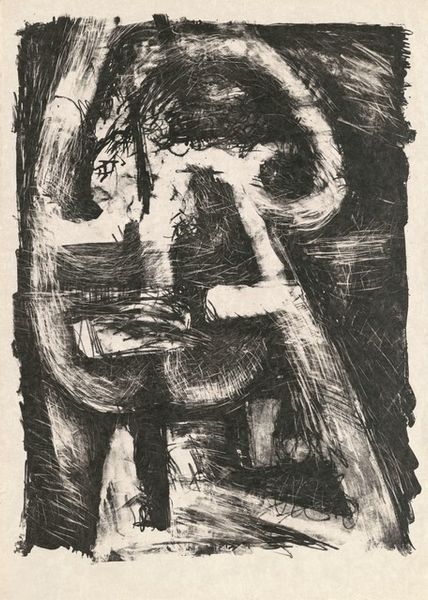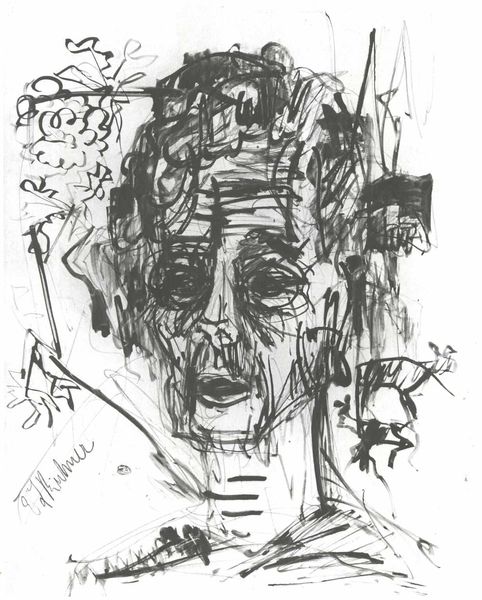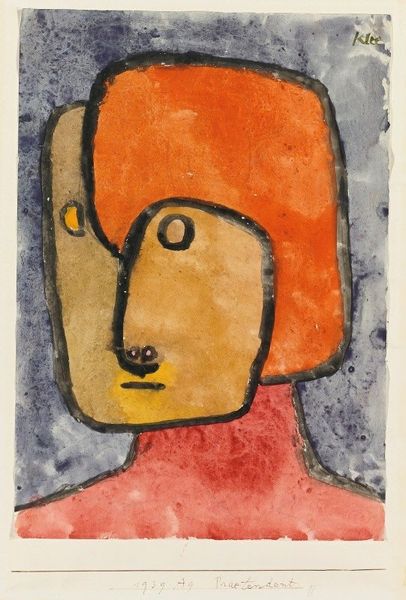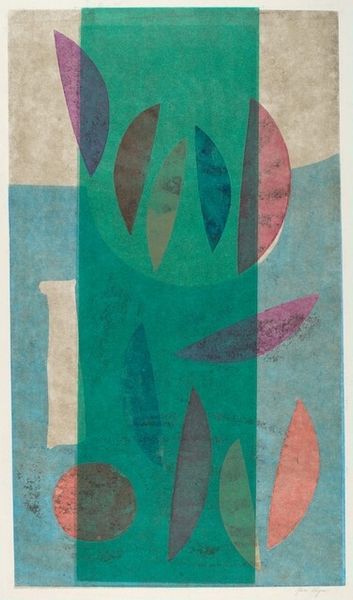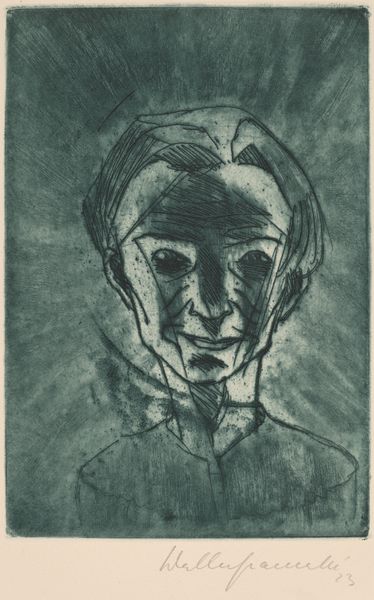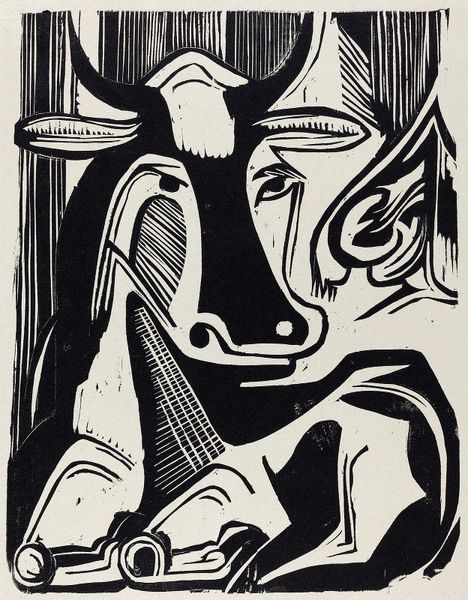![Portrait of Paul Valéry [left] by Jacques Villon](/_next/image?url=https%3A%2F%2Fd2w8kbdekdi1gv.cloudfront.net%2FeyJidWNrZXQiOiAiYXJ0ZXJhLWltYWdlcy1idWNrZXQiLCAia2V5IjogImFydHdvcmtzL2YwZTgxMDE4LWMyZmUtNDZkZC1hYzhiLTYyYzEzOTkwNDdiMi9mMGU4MTAxOC1jMmZlLTQ2ZGQtYWM4Yi02MmMxMzk5MDQ3YjJfZnVsbC5qcGciLCAiZWRpdHMiOiB7InJlc2l6ZSI6IHsid2lkdGgiOiAxOTIwLCAiaGVpZ2h0IjogMTkyMCwgImZpdCI6ICJpbnNpZGUifX19&w=1080&q=75)
drawing, coloured-pencil, print
#
portrait
#
drawing
#
cubism
#
coloured-pencil
# print
#
pencil sketch
#
figuration
#
coloured pencil
#
geometric
Copyright: National Gallery of Art: CC0 1.0
Curator: Standing before us is Jacques Villon's 1955 coloured pencil print, "Portrait of Paul Valéry [left]". The fragmented rendering immediately commands attention. What’s your first take? Editor: A strange mix of warmth and melancholy, like looking through a shattered lens. I’m immediately drawn to the textural qualities of the print; it is visibly handmade, you can almost feel the artist at work. Curator: Precisely. The use of colour planes to define the face and form alludes to Cubist strategies, creating multiple perspectives within a single image. This simultaneous presentation of viewpoints radically destabilizes the singular, fixed perspective of traditional portraiture. Editor: Yet it’s a very delicate Cubism, wouldn’t you say? The colour-pencil is almost understated; what paper stock did Villon chose, I wonder? The way it allows the colour to subtly sit on its surface seems intrinsic to the work’s overall affect. Knowing what paper Villon had to hand when he created the print surely impacts its affect. Curator: That's astute. There is a certain refinement at play; consider the restricted palette—earth tones combined with subdued blues and reds. He employed a subtle orchestration of tones, contributing to a feeling of measured thoughtfulness and reflection. Editor: Reflection perhaps on the mechanical production of the print medium? Let’s not forget that we’re dealing with a reproduction here. Although subtle and muted, there’s a repetitive, rhythmic element in how the pencils move that is at odds with the artist as sole author of this work. Curator: Interesting. The fractured geometry speaks to the intellectual pursuits and complexities of Paul Valéry. See how he fragments Valéry's face while nonetheless suggesting the psychological depth beneath the surface. The analytical approach aims not to shatter identity, but instead reveal it. Editor: Perhaps, but the fractured image to my eyes demonstrates the instability of authorship, between Valery’s own labour and person as author, to that of Villon who translates and represents him via reproductive printmaking methods. It calls into question all boundaries! Curator: Ultimately, Villon's "Portrait of Paul Valéry" challenges our conventions of representation. Editor: And draws attention to the collaborative aspect inherent in the labour of all image making.
Comments
No comments
Be the first to comment and join the conversation on the ultimate creative platform.
